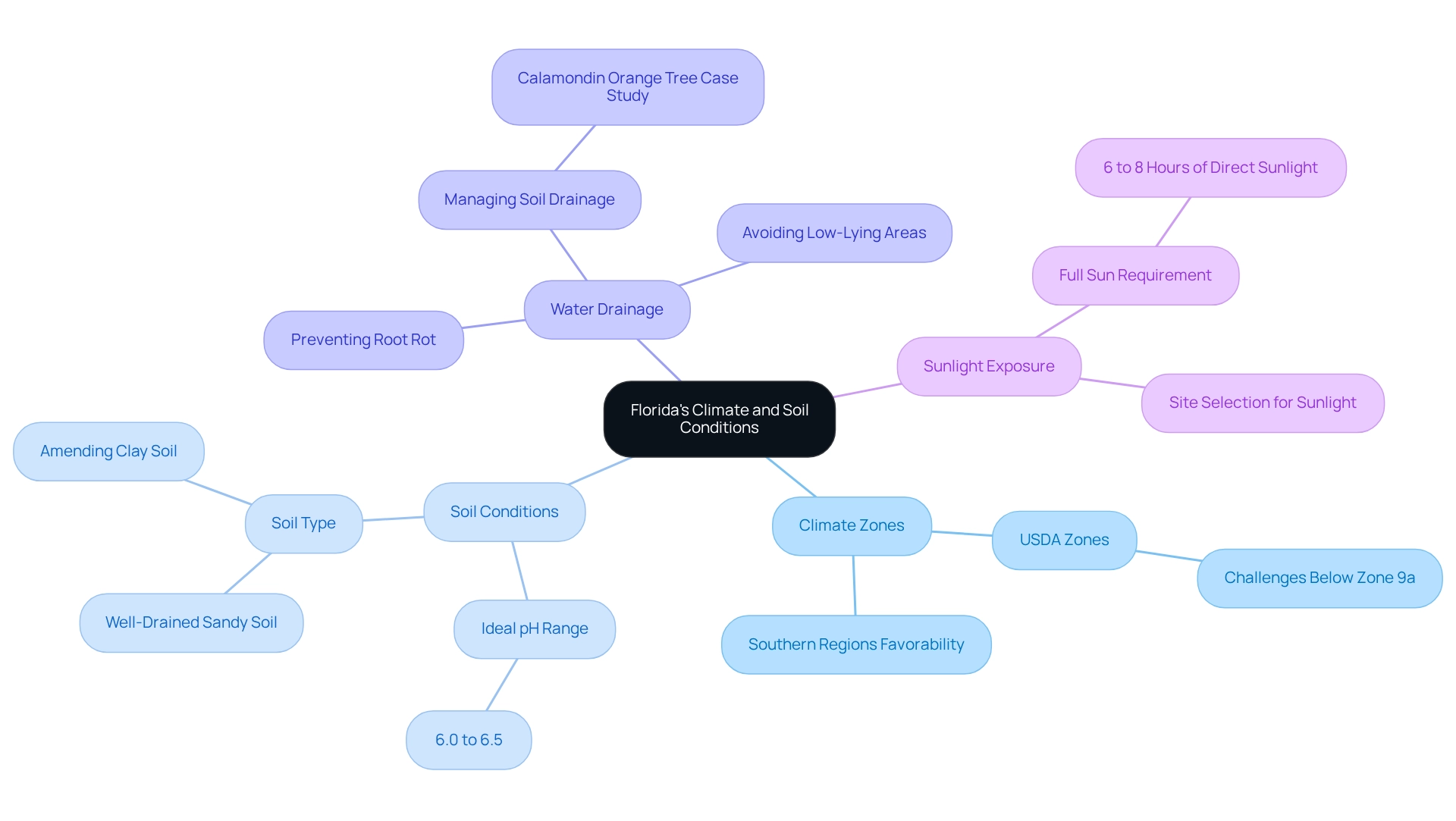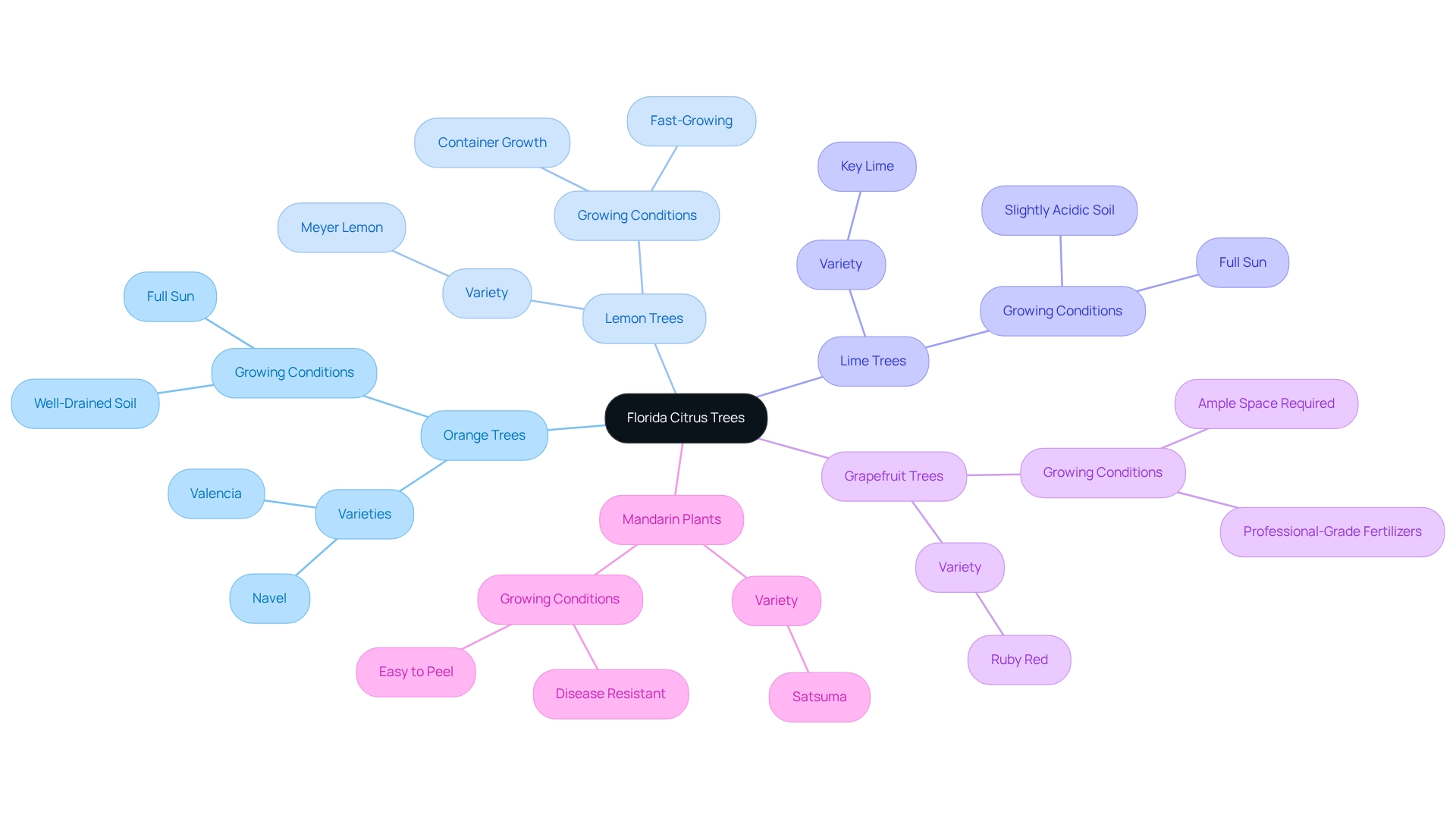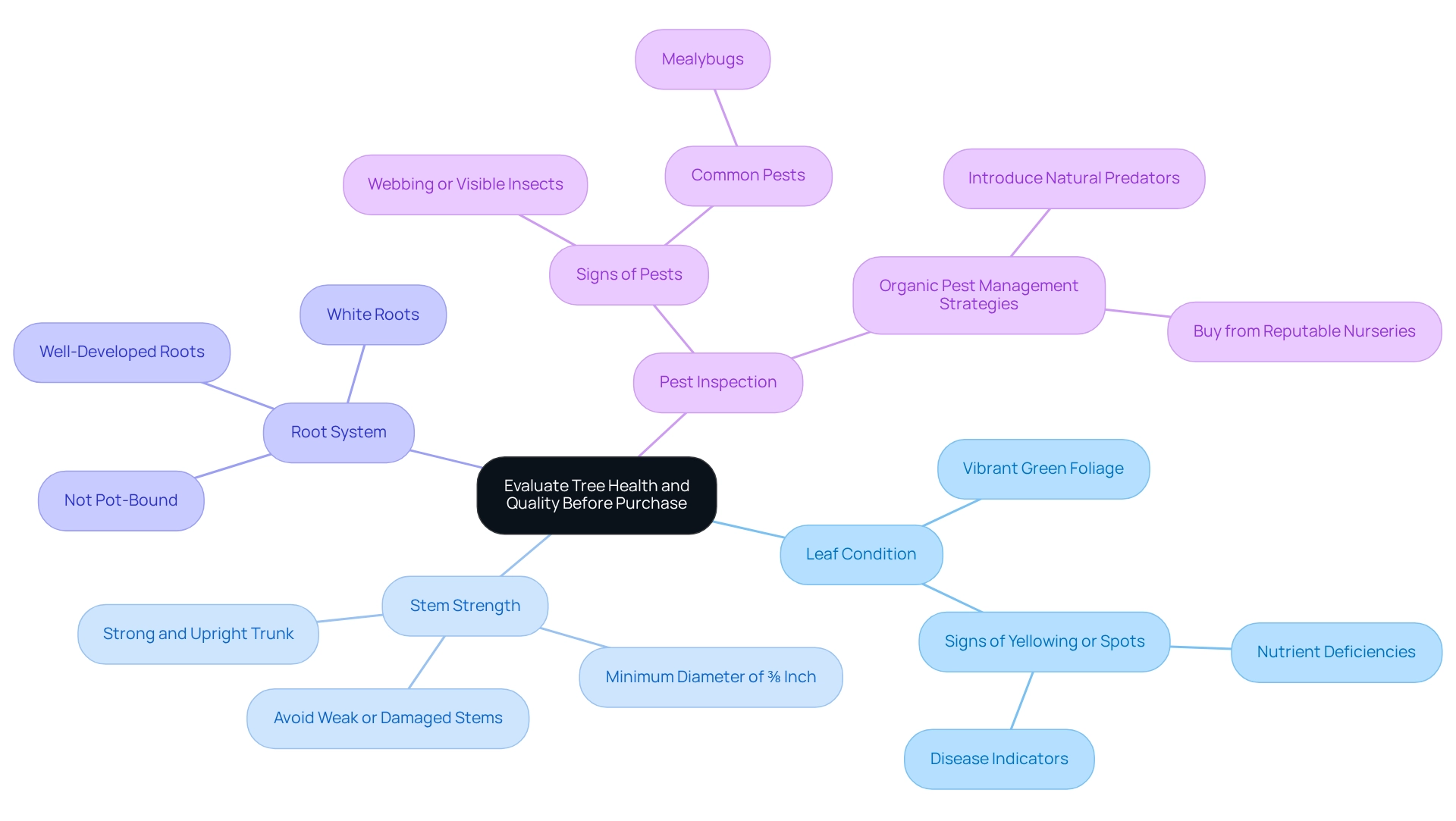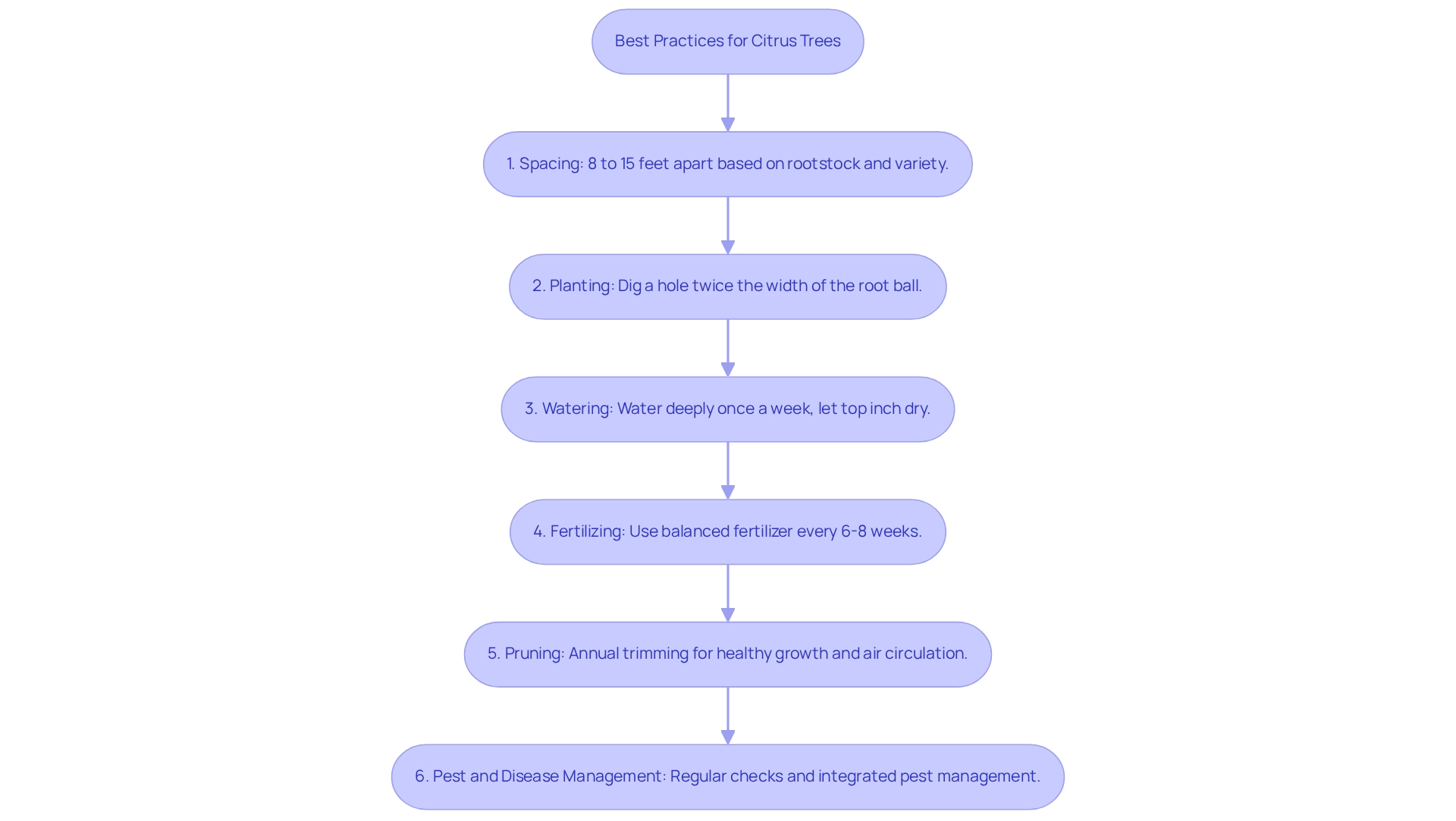
Florida Citrus Trees for Sale: Essential Tips for Success
Share
🌱 Want to grow sweet, healthy citrus at home? Whether you dream of backyard oranges or zesty lemons, Florida is the perfect place to start. In this guide, we’ll walk you through how to pick, plant, and care for the right citrus trees—so you get juicy rewards for years to come.
Cultivating Florida citrus trees can be a rewarding endeavor, but it often comes with its own set of challenges. Understanding the local climate and soil conditions is essential for success. Selecting the right tree varieties tailored to your specific environment can make all the difference. By implementing best gardening practices, you can nurture your citrus garden into a thriving oasis.
Consider factors like proper drainage and sunlight exposure. These elements are crucial for the health of your trees. Evaluating tree health regularly will help you identify any issues early on. Remember, a thriving citrus garden thrives in Florida's unique environment, and you have the power to create that nurturing space.
As you embark on this journey, think about your own experiences. Have you faced difficulties in your gardening efforts? You're not alone. Many gardeners share similar concerns, and that's where this guidance comes in. With a little patience and care, you can overcome these hurdles and cultivate a beautiful garden.
Let’s take actionable steps together. Start by assessing your garden's conditions and selecting the right varieties for your area. With each step, you’ll be building a connection with nature that is both fulfilling and enriching. Together, we can create a flourishing citrus garden that brings joy and abundance to your home.
🛒 Ready to grow? Explore Everglades Farm and get expert-picked trees delivered to your door.
👉 Shop Citrus Trees Collection
Understand Florida's Climate and Soil Conditions
- Climate Zones: Florida is divided into various climate areas, and the southern regions are particularly favorable for fruit due to their milder winters. Understanding your local zone is vital for selecting the right varieties that will thrive in your area. If you're in a USDA zone below 9a, it’s especially important to choose varieties of Florida citrus trees for sale that can withstand the challenges of your specific climate conditions. Florida citrus trees flourish in well-drained sandy soil. Conducting a ground analysis to evaluate pH and nutrient levels is a great step; the ideal pH range for fruit trees lies between 6.0 and 6.5. If you find that your soil is mostly clay, consider amending it with sand or organic matter to improve drainage and promote healthier root systems. This is crucial, especially given the significant economic impact of citrus cultivation, with The Bahamas being a notable export partner at $433.1 million, which is relevant for those interested in Florida citrus trees for sale, as these trees need full sun exposure, ideally basking in 6 to 8 hours of direct sunlight each day. When selecting a planting site, ensure it receives ample sunlight throughout the day, as this is vital for robust growth and fruitful yields.
- Water Drainage: Proper drainage is key to preventing root rot, a common challenge in citrus cultivation. Avoid planting in low-lying areas where water tends to pool, as this can create harmful wet conditions for your plants. A gardener's experience with a Calamondin orange tree highlighted the importance of managing soil drainage, especially during heavy rains. Proactive measures can sustain root health and ensure your plants thrive. Additionally, expert opinions suggest that localized climate conditions, or microclimates, play a significant role in tree development. As Kiersten Rankel noted, Louisiana's warm southern regions promote fruitful cultivation. Understanding these variations is essential as you plan your fruit garden. Remember, gardening is a journey, and with the right knowledge and care, you can cultivate a thriving oasis in your backyard.

Explore Different Types of Florida Citrus Trees
- Orange Trees: Varieties like Valencia and Navel are beloved for their sweet fruit. They thrive in full sun and well-drained soil, making them perfectly suited for Florida's sunny climate.
- Lemon Trees: The Meyer lemon stands out for its sweeter taste and adaptability. It can flourish in containers, making it ideal for smaller spaces, and is part of our Fast-Growing Trees collection, ensuring quick yields to enjoy.
- Lime Trees: Key limes are a fantastic addition to Florida gardens, producing small, aromatic fruits. They prefer slightly acidic soil and full sun, which leads to a bountiful harvest that you can be proud of.
- Grapefruit Trees: Varieties like Ruby Red are renowned for their juicy, tangy fruit. They require ample space to grow, as they can become quite large, and benefit from our professional-grade fertilizers for optimal growth.
- Mandarin Plants: Easy to peel and sweet, mandarins like Satsuma are perfect for home gardens. They are relatively disease-resistant, making them a dependable choice for gardeners seeking reliability, and you can find Florida citrus trees for sale among Everglades Farm's diverse offerings of tropical fruit plants and fast-growing greenery. Enhancing your home gardening experience has never been more rewarding, and we are here to support you every step of the way.

Evaluate Tree Health and Quality Before Purchase
- Leaf Condition: Healthy citrus plants showcase vibrant green foliage, free from yellowing or spots, which may indicate nutrient deficiencies or disease.
- Stem Strength: The trunk should be strong and upright, with a minimum diameter of ⅜ inch for young plants. It's wise to avoid any plants with weak or damaged stems, as these may suggest underlying health problems.
- Root System: A well-developed root system is crucial. If you can, gently take the plant out of its pot to examine the roots; they should appear white and not be pot-bound, indicating good health.
- Pest Inspection: Conduct a thorough examination for signs of pests, such as webbing or visible insects. Strong plants should be free from infestations, as pests can significantly affect development and fruit yield. Be vigilant for common pests like mealybugs, which can cluster on plants and lead to sticky surfaces and sooty mold growth.

Follow Best Practices for Planting and Caring for Citrus Trees
- Spacing: It’s important to ensure that your citrus plants are spaced 8 to 15 feet apart, depending on the rootstock and variety. This spacing allows for proper growth and air circulation, which is essential for their health.
- Planting: When planting, dig a hole that is twice the width of the root ball and equal in depth. Place the tree so that the top of the root ball is even with the ground surface. Backfill with earth and water thoroughly to eliminate air pockets, nurturing your new plant from the start.
- Watering: Water deeply once a week, allowing the top inch of soil to dry out between waterings. Adjust the frequency based on rainfall and temperature to ensure your plants receive sufficient moisture without becoming waterlogged. Remember, your citrus trees thrive on consistency.
- Fertilizing: Use a balanced fertilizer specifically formulated for citrus plants. Following the package guidelines for application—usually every 6-8 weeks during the growing season—will help encourage robust development and a fruitful harvest.
- Pruning: Conduct annual trimming to remove dead or diseased branches and to shape the plant. This practice not only encourages healthy growth but also enhances air circulation, which is vital for preventing disease.
- Pest and Disease Management: Regularly examine your plants for signs of pests or diseases. Implement integrated pest management strategies, such as introducing beneficial insects and using organic treatments when necessary. It’s crucial to control pests like the Asian psyllid (ACP), which can spread diseases and harm young fruit tissue. Effective management of ACP involves using insecticides and soft chemistry options, all while minimizing disruption to beneficial insects and following safe pesticide practices.

Conclusion
Everglades Farm's about page has insights into Florida planting tips.
Read: 3 Essential Practices for Growing an Organic Mulberry Tree
🍊 Let’s Grow Sweet Citrus Together
With the right citrus trees and guidance, you can enjoy juicy fruit straight from your own backyard. Explore Everglades Farm for high-quality orange, lemon, lime, and grapefruit trees grown right in Florida. Your citrus garden starts today!
👉 Shop Citrus Trees Collection or explore Orange Trees collection.
Read: 8 Essential Fruit Plants for Your Backyard Garden


